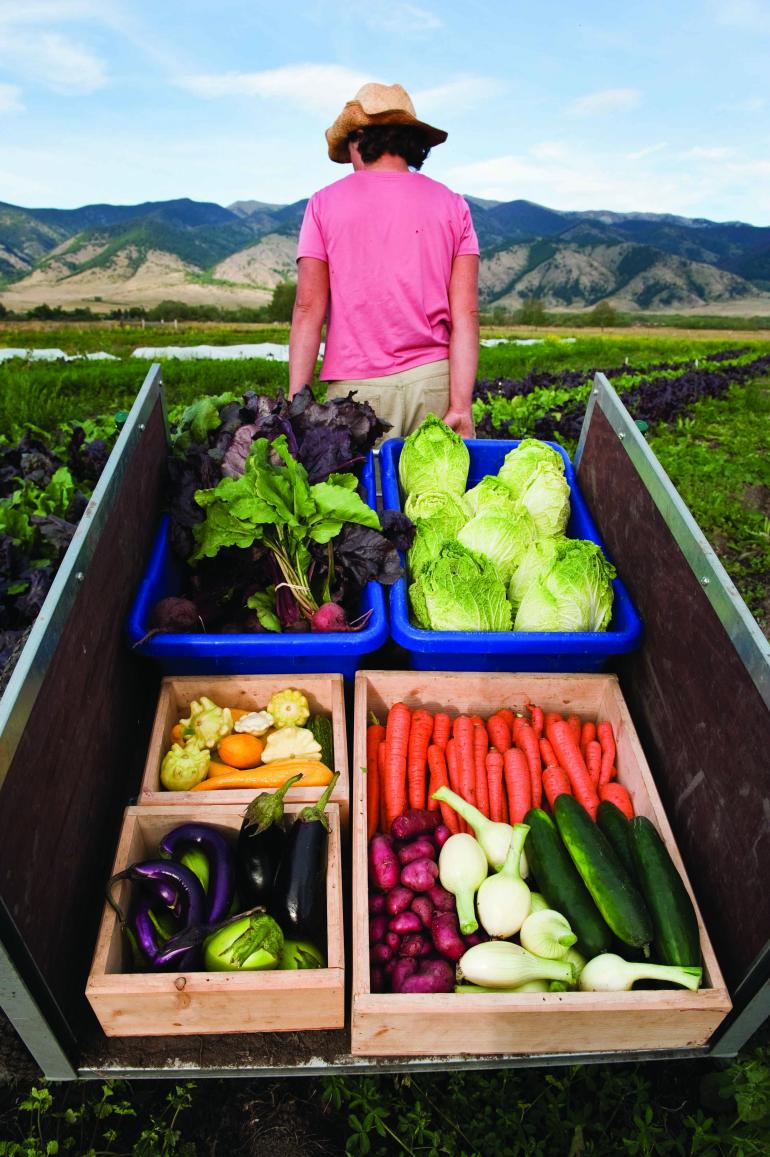Back to the Future
Against my grandmother’s advice, I’d like to pass on a rumor. It’s relatively harmless, though I cannot confirm it. It goes something like this. Around the mid-‘60s, a group of women in Japan grew increasingly concerned about their food. They worried about the decreasing number of farms and the increased use of processed foods and pesticides. They approached local farmers with an idea to support them and in return, receive fresh, healthy, chemical-free food. They called their idea teikei—literally, “partnership” but also translated as, “food with a farmer’s face on it.” Today, we call it CSA.
CSA stands for Community-Supported Agriculture, and it’s been in the U.S. since the 1980s. The essentials are the same as they were rumored to be in Japan: members of the community pay a farmer at the beginning of the season for a small portion of the harvest; during the growing season, they receive their weekly “share”—a box of whatever’s in season and ready for harvest.
This usually happens with vegetable farmers, but increasingly, there are all sorts of CSAs: cut-flower CSAs, CSAs for eggs, and CSAs for all sorts of other food items. And, with CSAs all over the country, more and more people want to know how their food is produced and who produces it.
Beyond the guarantee of access to farm-fresh food, a CSA really is a community-building tool. Consumers and producers enter into a relationship when they agree to CSA shares. Producers get the thrill (yes… thrill) of shaking the hands of the people who eat their food. They get the honor of feeding their neighbors, and they are supported financially to continue to grow the food that their neighbors love.
Consumers know their farmer by name. They ask him what his practices are, they expect her to serve up organically-grown food, and they begin to ask what sustainable farming really is. They begin to understand seasonal eating; they see—in practice—the power of proper land management. They come to understand what it really takes to produce healthy food.
And, of course, when we participate in a CSA, we pay a local resident-farmer. It seems simple, but those transactions mean that our dollars stay in the community; that farmer will spend the income from his or her CSA in the same community where she received it. Money spent at chain groceries returns to corporate headquarters. Joining a CSA falls under the “buy local” theme of so many other locally-owned businesses in our community—the money stays here, in Montana. It’s neighbor supporting neighbor, and it makes the community stronger.
Local food relies on tiny distances and human labor; it’s more about backaches and blisters than buying fuel. Montana has always been an agricultural state. It’s in our bones. Which is one reason more and more people are joining CSAs. Others join because they like knowing that their food—even their organic food—doesn’t come from thousands of miles away. Still others join because they like knowing their food is safer or that is has increased nutrition benefits. And then there are the pragmatists, who join simply for the incredible taste of local food.













